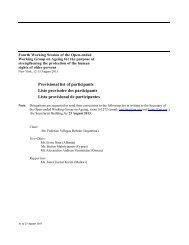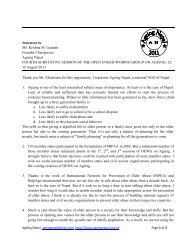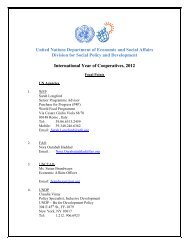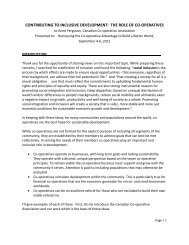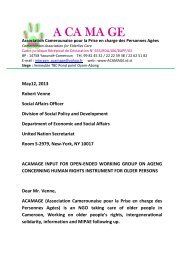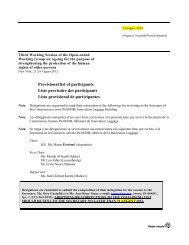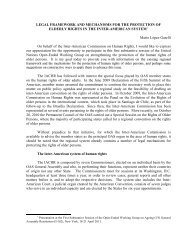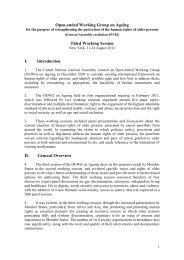Audit of Residential Facilities, Final report - Division for Social Policy ...
Audit of Residential Facilities, Final report - Division for Social Policy ...
Audit of Residential Facilities, Final report - Division for Social Policy ...
You also want an ePaper? Increase the reach of your titles
YUMPU automatically turns print PDFs into web optimized ePapers that Google loves.
66% nursing assistants = 9 (50% can be replaced with care givers)It was quite alarming there<strong>for</strong>e, that in at least 21% <strong>of</strong> homes they never had access to a nurse,with some provinces much higher such as Eastern Cape (49%), Free State (33%) and NorthWest Province (65%). This means that these homes probably rely on nursing assistants andcaregivers.Public hospital services:In the majority <strong>of</strong> homes the residents had to access medical services such as a doctor,medicines, a physiotherapist and occupational therapist at their nearest hospital. While in 81% <strong>of</strong>homes there was a hospital available within a 1-10km radius, in some provinces the hospitalswere more than 50km away from the home. In the Free State out <strong>of</strong> 33 homes, 11 were morethan 50km away from the home making access to medical care very difficult. The lack <strong>of</strong>transport was a problem in many <strong>of</strong> the homes so in the case where homes did not haveappropriate transport <strong>for</strong> the residents, they relied on family members who were easy to access,or on an ambulance from the Department <strong>of</strong> Health that was very unreliable. In almost all thehomes they indicated that even where an ambulance fetched the resident, they would not returnthen to the home when they were discharged.In<strong>for</strong>mation received from all respondents across the provinces, there were numerous complaintsreceived by older persons who are <strong>for</strong>ced to use the services <strong>of</strong> government hospitals. They are<strong>report</strong>edly not treated with dignity and respect; have to wait <strong>for</strong> many hours to be assisted. Manycomplained that they waited long hours and <strong>of</strong>ten returned from a full day at the hospital withouthaving been attended to by a doctor, or receiving medication.In the SA <strong>Policy</strong> <strong>for</strong> Older Persons it notes that “…A Ministerial Committee was appointed in2000 to investigate the neglect, ill-treatment and abuse <strong>of</strong> older persons. It found services <strong>for</strong> theelderly in hospitals and clinics to be less than adequate and heard many complaints about theattitude <strong>of</strong> staff to older patients, the shortage <strong>of</strong> medicines and assistive devices, the lack <strong>of</strong>transport and long out-patient waiting times…”It is there<strong>for</strong>e very concerning that since 2000 the situation <strong>for</strong> older persons using the publichealth system remains the same and in some cases might have worsened. Since this provision<strong>of</strong> frail care <strong>for</strong> those in need <strong>of</strong> twenty-four hour care is <strong>of</strong>ficial policy the division <strong>of</strong> responsibilitybetween <strong>Social</strong> Development and Health Departments needs to be clarified. The <strong>Policy</strong> states34 | D S D A u d i t o f R e s i d e n t i a l F a c i l i t i e s



